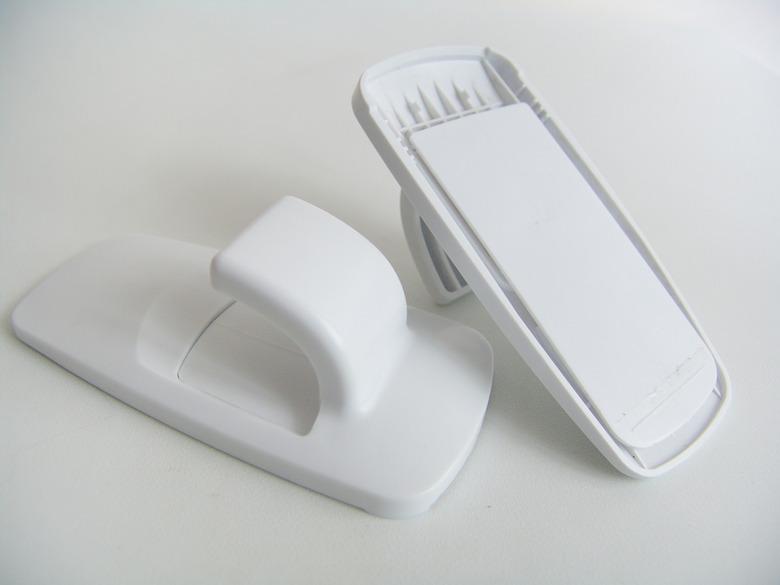How To Remove Adhesive Wall Hooks
Adhesive wall hooks are a convenient method of hanging up items without drilling holes in your walls or the landlord's walls. While they're handy, it can become problematic when it's time to remove the hooks and adhesive. Removing the adhesive improperly may result in damage to the paint and underlying drywall. With a few simple tricks, you can unstick the hooks so spackling and repainting won't be necessary when you redecorate or move.
Using Adhesive Wall Hooks
While there are a variety of adhesive wall hooks available, the Command line of adhesive hooks and spring clips is advertised as easy to install and remove. Despite the ease of use, Command does not recommend using the hooks to hang pictures, mirrors, or valuable items. Command hooks are best used on smooth surfaces; avoid using them on textured walls or wallpaper.
Whether installing a one- or two-piece hook, clean the wall with rubbing alcohol and allow it to dry completely. Remove the red liner on the double-stick tape and press it onto the back of the hook with the arrow pointing down. Remove the black liner and press the hook to the wall for 30 seconds per the instructions on the package. Wait for one hour before using the hook.
Other brands of adhesive wall hooks and brackets are attached to walls in a similar manner as Command strip hooks. Heavy-duty brackets and hooks made by other manufacturers don't use the proprietary pull tabs to remove their hooks and adhesives. In addition, the recommended wait time varies according to the manufacturer, product, and amount of weight the hook or bracket can hold. The label instructions for some heavy-duty hooks recommend waiting 12 hours before use.
Removing a Wall Hook
When removing Command adhesive two-piece hooks, slide the hook up and off the base. Then, with both one- and two-piece hooks, hold onto the base and pull the strip straight down. As the strip stretches, hold it with one hand and move your other hand up to grasp the strip close to the base. Continue pulling and moving your hand up until the adhesive releases from the wall. The strip may stretch to 15 inches or more before it detaches.
If the Command strip breaks, try heating the adhesive with a hair dryer and then pull it free. If it stubbornly sticks, try using dental floss to saw between the hook and the wall and cut through the double-stick tape. Heat also works with other brands of adhesive wall hooks, softening the adhesive so you can pull the hook away from the wall.
Alternatively, if the adhesive softens but doesn't release, try sliding a putty knife under the hook to scrape and lift it from the wall. Warm, soapy water is an option when removing the hook from a hard surface, like tile, glass, or plexiglass.
Cleaning Adhesive off the Wall
Once the adhesive wall hook has been removed, you may have some sticky residue or pieces of tape left on the wall. In general, warm, soapy water doesn't work well on painted surfaces, though it may suffice for hard surfaces. Applying a paste of baking soda and water with a soft toothbrush is often enough to remove sticky adhesive from tile, stone, and concrete. Rinse well and allow it to air-dry.
Apply rubbing alcohol, hand sanitizer, acetone, or nail polish remover with care. These products can damage and discolor paint and finished surfaces, so test your selected adhesive remover by putting a little on a cotton ball and patting it onto painted walls, paneling, or wood trim in an inconspicuous location. Commercial adhesive removers include Goo Gone and Goof Off, or you can try a quick squirt of WD-40 to remove the adhesive. After removing the sticky residue, clean the wall with dishwashing soap and warm water and pat dry with a rag.
If you accidentally gouge the paint or tear the drywall, after removing the rest of the adhesive, take time to spackle the damage. Smooth with a putty knife or spackle knife and then touch up with paint. Repair wood surfaces with a bit of tinted filler or a touch-up kit.
